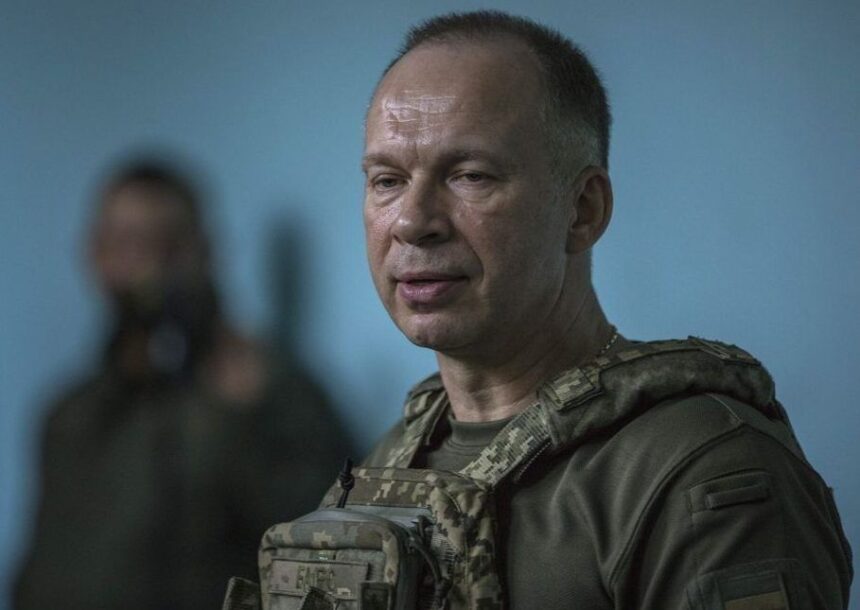As NATO defense ministers gathered in Brussels yesterday, Ukraine’s intelligence chief delivered a stark warning that’s sending ripples through diplomatic corridors. Russia has positioned nearly 700,000 troops in and around occupied Ukrainian territories—a military buildup that signals Vladimir Putin is digging in for a protracted conflict rather than seeking any negotiated settlement.
“We’re witnessing a strategic shift in Moscow’s approach,” said Lieutenant General Kyrylo Budanov, head of Ukraine’s military intelligence directorate, speaking via secure video link from Kyiv. “This isn’t merely about holding ground anymore. The scale suggests Russia is preparing for years of occupation and continued offensive operations.”
According to Ukrainian defense ministry figures, Russian forces now include approximately 510,000 soldiers directly deployed across occupied territories and an additional 190,000 positioned along Ukraine’s northern borders. These numbers represent Moscow’s largest military concentration since the full-scale invasion began in February 2022.
I’ve spent the past week moving between military briefings in Brussels and Washington, where Western intelligence officials largely corroborate Ukraine’s assessment. One senior Pentagon analyst, speaking on condition of anonymity due to the sensitivity of intelligence matters, told me: “We’re seeing evidence of long-term infrastructure being established. This isn’t temporary positioning—it’s entrenchment.”
The Russian buildup comes as Ukraine faces mounting challenges on multiple fronts. Ammunition shortages continue to plague defensive operations while political complications in Washington have delayed crucial military aid packages. Meanwhile, Moscow’s war machine benefits from increased production capacity and partnerships with North Korea and Iran, which have supplied artillery shells, drones, and ballistic missiles.
“What makes this particularly concerning is Russia’s ability to absorb significant losses,” explained Dr. Marina Kuznetsova, a Russian military specialist at the International Institute for Strategic Studies. “Despite suffering an estimated 315,000 casualties since February 2022, they’ve managed to not only replace these losses but substantially increase their overall force posture.”
Russian forces have made incremental gains in eastern Ukraine’s Donetsk region, particularly around Avdiivka and Chasiv Yar. Western intelligence assessments suggest these advances, while limited, demonstrate improved tactical coordination and more effective use of electronic warfare to counter Ukrainian drones.
During a recent frontline visit near Kharkiv, I witnessed firsthand the evolving nature of Russia’s strategy. Ukrainian brigade commanders described how Russian forces are rotating units more efficiently, allowing troops regular rest periods while maintaining constant pressure on Ukrainian defenses.
“They’re learning and adapting,” Colonel Serhiy Hrabsky of Ukraine’s 92nd Mechanized Brigade told me as we sheltered during an artillery barrage. “They’ve moved beyond the human wave tactics of last year to more sophisticated combined arms operations, supported by improved air reconnaissance.”
Financial data reveals the depth of Moscow’s commitment. Despite Western sanctions, Russia has increased its defense spending to approximately 6.7% of GDP according to IMF estimates—nearly triple its pre-invasion levels. The Kremlin has effectively transitioned key industries to war production, with factories operating around the clock.
Ukrainian President Volodymyr Zelenskyy has repeatedly warned Western partners about Russia’s growing military capacity. During last month’s NATO summit in Washington, he presented intelligence suggesting Russia could launch a major new offensive by late summer, potentially targeting the northeastern Sumy region or pushing further in the east.
“We’re not just fighting today’s war; we’re preparing for tomorrow’s escalation,” Zelenskyy said during closed-door meetings with allied leaders, according to a senior European diplomat present at the discussions.
The humanitarian implications of a prolonged conflict are equally disturbing. The UN High Commissioner for Refugees reports over 6.5 million Ukrainians remain displaced abroad, with millions more internally displaced. In Russian-occupied territories, human rights organizations document ongoing forced deportations, filtration operations, and systematic attempts to erase Ukrainian identity.
Speaking with residents who recently escaped occupied Melitopol, I heard consistent accounts of Russian authorities replacing Ukrainian curriculum in schools, confiscating Ukrainian-language books, and requiring Russian passports for basic services.
“They’re preparing not just for military occupation but complete absorption,” said Olena Stepanova, who fled with her two children last month after Russian authorities threatened her teaching position for refusing to adopt Russian educational materials.
Western responses to Russia’s troop buildup have been mixed. NATO Secretary General Jens Stoltenberg acknowledged the concerning developments but emphasized that the alliance’s support for Ukraine remains “unwavering.” However, practical challenges persist in supplying Ukraine with the quantity and quality of weapons needed to counter Russia’s numerical advantage.
The Pentagon’s recent $6 billion security assistance package, though substantial, may not arrive quickly enough to address immediate battlefield needs. European production capacity continues to lag behind requirements, despite increased investment in defense industries.
As winter approaches, energy security has reemerged as a critical concern. Russian forces have intensified attacks on Ukraine’s power infrastructure, damaging approximately 80% of thermal generation capacity. Western intelligence agencies warn Moscow may be preparing a coordinated campaign to leave Ukrainian cities without heat during the coldest months.
For ordinary Ukrainians, Russia’s military buildup represents an existential threat that transcends political and diplomatic calculations. “They’re telling us they’re here to stay,” said Dmytro Kuleba, Ukraine’s foreign minister, during recent talks in Berlin. “Our partners must understand this isn’t about territorial concessions or freezing the conflict—it’s about our right to exist as a nation.”
As Ukraine approaches the 1,000-day mark since Russia’s full-scale invasion, the message from Moscow’s massive troop deployment is unmistakable. This is no longer just a war of territorial conquest but a fundamental challenge to the post-Cold War European security architecture. The question now facing Western leaders is whether their support for Ukraine will match the scale and determination of Russia’s apparent commitment to this conflict.






